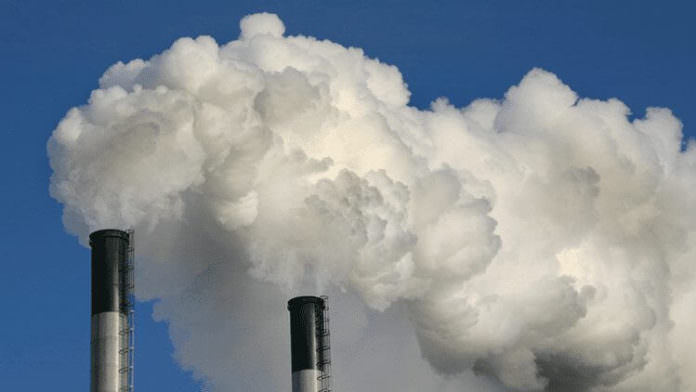
With increasing pressure being exhibited, zero carbon emissions goals are encompassed in the power sector future. Mandated by laws and even executive orders, 17 states presently plan to achieve totally carbon-free electricity within the next few decades. Washington D.C. and Puerto Rico are also following suit.
Continuing the cause, 46 United States electrical companies have pledged a carbon-free footprint by 2050. The resulting coverage accounts for approximately half of the population and economy of the United States. Analyzing data representing the last 15 years, viable evidence shows that the electricity sector is more than capable of significant reductions in emissions.
Attempting to predict the future, historical data must be considered. The Department of Energy’s Lawrence Berkeley National Laboratory, known as the Berkeley Lab, has initiated new research. Historical trends are being evaluated to determine the current progress the electrical sector has accomplished in emission reduction.
Serving as the official agency of the United States regarding data management and evaluation, the Energy Information Administration (EIA) released the 2005 Annual Energy Outlook. This is the subject of the Berkeley Lab study, “Halfway to Zero: Progress towards a Carbon-Free Power Sector.”
“Business-as-usual projections saw annual carbon dioxide emissions rising from 2,400 to 3,000 million metric tons (MMT) from 2005 to 2020,” said Berkeley Lab scientist Ryan Wiser, who is the lead author of the study. “But actual 2020 emissions fell to only 1,450 MMT. The U.S. cut power sector emissions by 52 percent below projected levels — we are now ‘halfway to zero.’”
The study revealed that when considering projected values, consumer electricity costs were met with a reduction of 18%. Costs associated with human health witnessed a 92% decrease while climate costs themselves fell by 52%. Solidifying the uptick, an increase of 29% was seen in the electricity generation job market.
Pairing Cleanliness and Efficiency
Driving forces responsible for favorable statistics are due in large part to policy changes, market play, and advancements in technology. A reduction, however, in economic and population growth was identified in 2020 and indicated that the electricity demand for the year was nearly the same as in 2005. The United States, however, has widely grown since 2005 regarding efficiency. For example, LED lights get more from a kilowatt-hour of electricity as opposed to performance from 15 years ago.
While emission-free nuclear power generation remained unchanged, wind and solar power impressively exceeded expectations. They actually produced 13 more times of power generation than what was expected for 2020. Directly influenced by decreased prices, natural gas generation experienced rapid growth. This served as the proverbial foot on the neck and drove coal out of the market.
These alterations discovered in power generation data indicate an 18% decrease in consumer electric bills. This resulted in homeowner savings of $86 billion per year, which is lower than EIA projections.
With the decrease in coal generation, sulfur and nitrogen emissions saw a significant drop in health issues, including respiratory disease. Power-sector air pollution deaths even witnessed a drastic reduction from 38,000 to 3,100.
“Compared to the business-as-usual projection, not only did the nation significantly reduce its carbon footprint, but it did so while also reducing total energy bills and health burdens,” said Dev Millstein, Berkeley Lab scientist.
Down the Road
While a 15-year possibility of significant reductions in emissions is greatly possible, the study additionally hypothesizes that the next 15 years do not necessarily guarantee mirroring progress.
The study also indicates that the majority of the energy capacity necessary to close in on a zero-carbon power sector is currently underway. More than half of the necessary output to reach a zero-carbon goal is already underway, with 660 gigawatts of wind and solar projects have requested transmission access.
With advancements made and a positive track to the power sector, zero-emissions are in place; the unwelcomed truth is that not all projects will come to fruition, although interest remains.
Wiser identified potential hurdles within the renewable energy theater and ambitious requirements in infrastructure. The power sector finds itself in the spotlight and will have to step up. A strong assurance of quality in the delivery of electricity as well as reliability will be an essential focus, especially in the wake of the February winter storm aftermath in Texas.
Additionally, transmission infrastructure will need to see an increase in construction. Power grids will need to be upgraded and improved. Contingency plans must be developed and in place for impacted staff, personnel and communities.
The study does account for pitfalls in wind and solar and calls for the implementation of solutions and contingency planning. Winds are sometimes calm, and the sun typically fails to shine during a thunderstorm. Potential answers include long-term energy storage, hydrogen fuels, bioenergy, carbon capture, nuclear energy, geothermal energy and solar-thermal with storage possibilities.
“As the country maps out a plan for further decarbonization, experience from the past 15 years offers two central lessons,” said Wiser. “First, policy and technology advancement are imperative to achieving significant emissions reductions. Second, our ability to predict the future is limited, and so, it will be crucial to adapt as we gain policy experience and as technologies advance in unexpected ways.”














